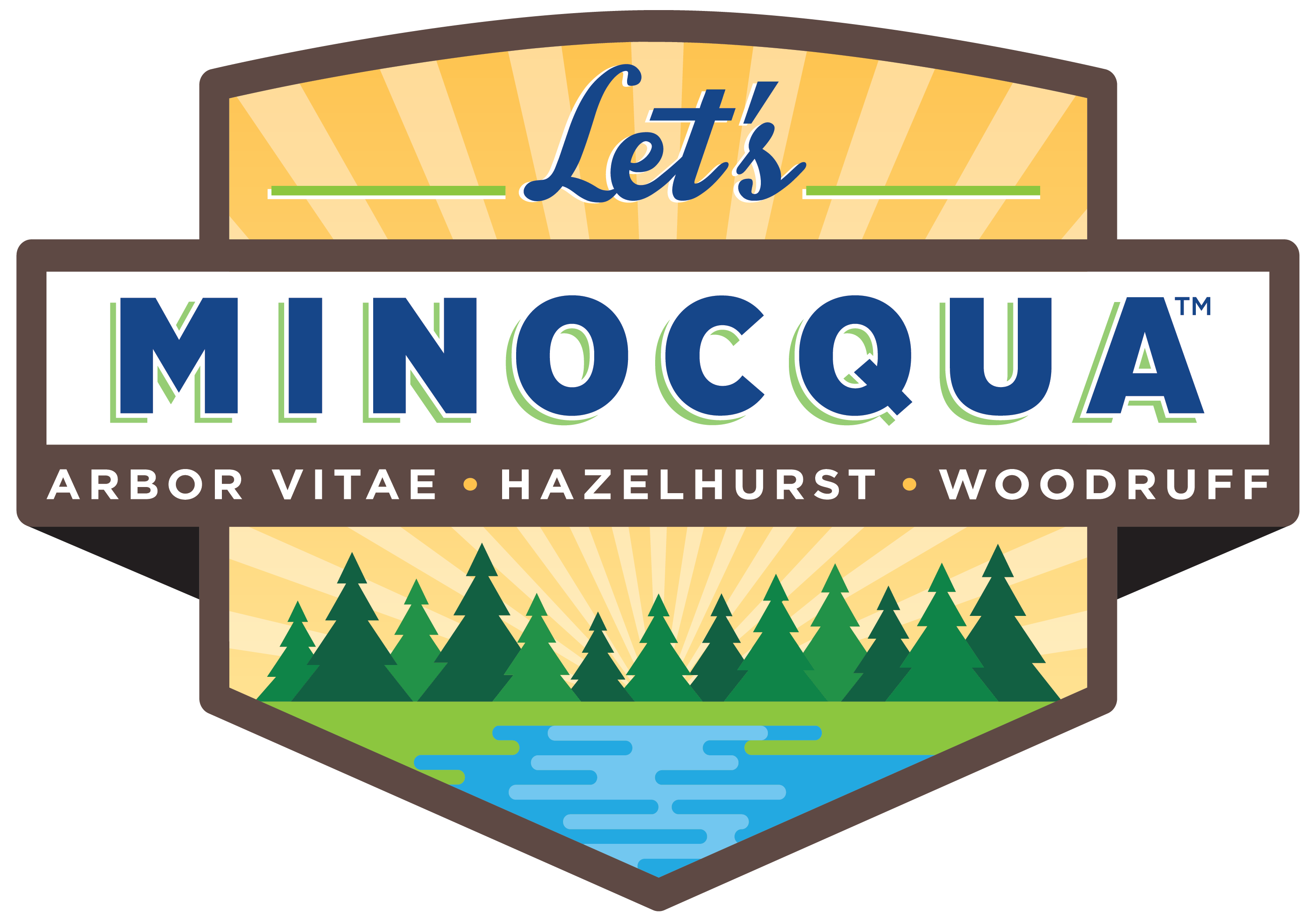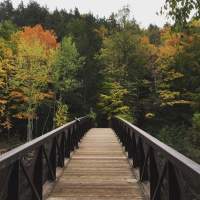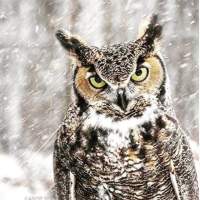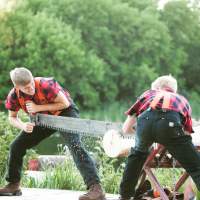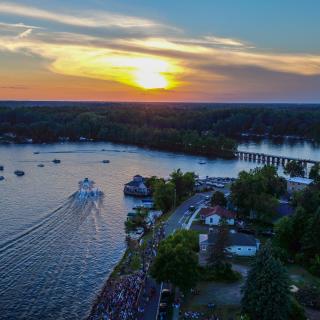When 1,200 people show up for a Monday night ball game, it’s noticeable in a town of 1,100. In July and August, it happens weekly in Lake Tomahawk, turning the streets and ballpark into a scene by Norman Rockwell. There’s no admission fee, not much tailgating and no high stakes riding on the outcome. No ESPN coverage, either (not yet, anyway).
So what’s the big deal? It depends on whom you ask. Some will tell you it’s the wooden snowshoes. Others will say it’s the pies.
The Lake Tomahawk Snowhawks played snowshoe baseball on snow in the 1940s and 50s, and even won a world championship. In 1960, the team began playing on a field of woodchips and sawdust to amuse summer tourists. A tradition was born and Lake Tomahawk claimed its fame as “The Snowshoe Baseball Capital of the World.”
Families crowd the streets, people greet one another like old friends, and the festive air is palpable. Starting early in the morning — or even the night before — fans reserve their seats by laying blankets on the bleachers (capacity: 800900), or positioning chairs at the edge of Snowshoe Park.
The game is played with no gloves and a 16-inch fluorescent yellow baseball. The color is a hold-over from the winter sport, when a white ball was invisible. “Crowds love the surprise moment in every game when a honeydew painted fluorescent yellow is smuggled onto the field, tossed by the pitcher and hit by the batter. The point? “To splatter the ump, of course.” The highlight for many is a slice of the 70 to 80 homemade pies sold by area service clubs and community groups. The pies sell out before the game even begins. A Tradition Like No Other!
If You Go... Games start at 7:30 p.m. on Mondays from mid-June through late August. Arrive earlier for a piece of pie. The games are always held at Snowshoe Park, located in Tomahawk. Feel free to drop a few bucks into the butterfly net that is passed around during each game, raising funds to help offset the team’s $20,000 annual budget.
Lake Tomahawk
Lake Tomahawk began as a lumberjack town, originally known as “Rainbow.” Crude lumber camps and trapping drew people to this Chippewa wilderness. Railroads and saw mills rapidly developed and it was established as a village by 1889. The tourism industry began in 1892 when resorts were built around the many lakeshores near Lake Tomahawk. Not all of the developers were local; many came from Chicago, Milwaukee and other large cities. They used their ingenuity, skills and money to make Lake Tomahawk a thriving tourist town, quietly and peacefully.
Lake Tomahawk is well known to many for the Camp American Legion and the McNaughton Correctional Camp, formerly a rehabilitation camp for people recovering from tuberculosis.
